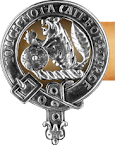
William M. Kelso at the site of what he says was Jamestown's church.
The discovery has excited scholars and preservationists, and unearthed a long-hidden dimension of religious life in the first permanent colony.
It may prove to be an attraction for another reason: the church would have been the site of America’s first celebrity wedding, so to speak, where the Indian princess Pocahontas was baptized and married to the settler John Rolfe in 1614. The union temporarily halted warfare with the region’s tribal federation.
Last week Mr. Kelso, the chief archaeologist at the site, hopped into the excavated pit topped with sandbags and pointed to where Pocahontas would have stood at the altar rail. Orange flags marked the church’s perimeter. The pulpit would have been to the left and a baptismal font behind, with a door opening toward the river.
“I’m standing where Pocahontas stood,” Mr. Kelso said, gesturing to the earth at his feet. “I can almost guarantee you that.”
It would have been unthinkable for the intrepid settlers, as ambassadors of country, crown and church, not to erect a building for worship and conversion of Native Americans in their Virginia Company encampment.
Nor is it the nation’s oldest house of worship: Britain’s earlier “lost colony” in North Carolina may have had a church, and remnants of 16th-century Catholic churches and missions have been identified, according to Mr. Kelso. But the 2010 discovery and continuing excavation has generated excitement partly due to the size of the 1608 structure — at 64 feet by 24 feet, it was an architectural marvel for its time — and also because of how little has been understood about religion in Jamestown.
Some scholars lament that popular knowledge of colonial-era religion has been flattened into a view of the Virginians as greedy and indolent, while later colonists in Plymouth, Mass., were pious and devout.
The distinction is rooted in their origins. While Virginians were largely loyal to the Church of England, the pilgrims in Plymouth repudiated the church and came to America to escape it.
“Fundamentally, they’re different places,” said David D. Hall, a scholar of colonial religion at Harvard Divinity School.
Religion would still have been central to Jamestown, and theories abound as to why there has been scant attention. Histories tend to emphasize commercial pursuits of its colonists, and scholars also point to the Civil War: with the Union victory, the story of Northern colonial virtues — including piety — triumphed over those of the South. Another view is that Plymouth had a prolific printer and Jamestown did not.
“You have two very different Christian experiences; both of them can be equally rich and nuanced, but one tended to leave a much richer and more layered testimony about itself,” said Richard Pickering, deputy director of program innovation at Plimoth Plantation, the recreated colonial village in Plymouth that uses the historical spelling of the name.
There is also a practical reason: until recently, relics of early Jamestown were underground. For centuries, the fort was believed washed into the James River. But Mr. Kelso, unconvinced, began digging along the river’s banks in 1994.
By 1996, he was certain he had located James Fort’s perimeter. The site has since yielded about 1.4 million artifacts, many of them stored in a locked, fireproof laboratory nearby.
But the original church remained elusive. Then, last fall, the archaeologists located remnants of a new structure beneath Civil War earthworks.
Read the rest in the NY Times here











No comments:
Post a Comment